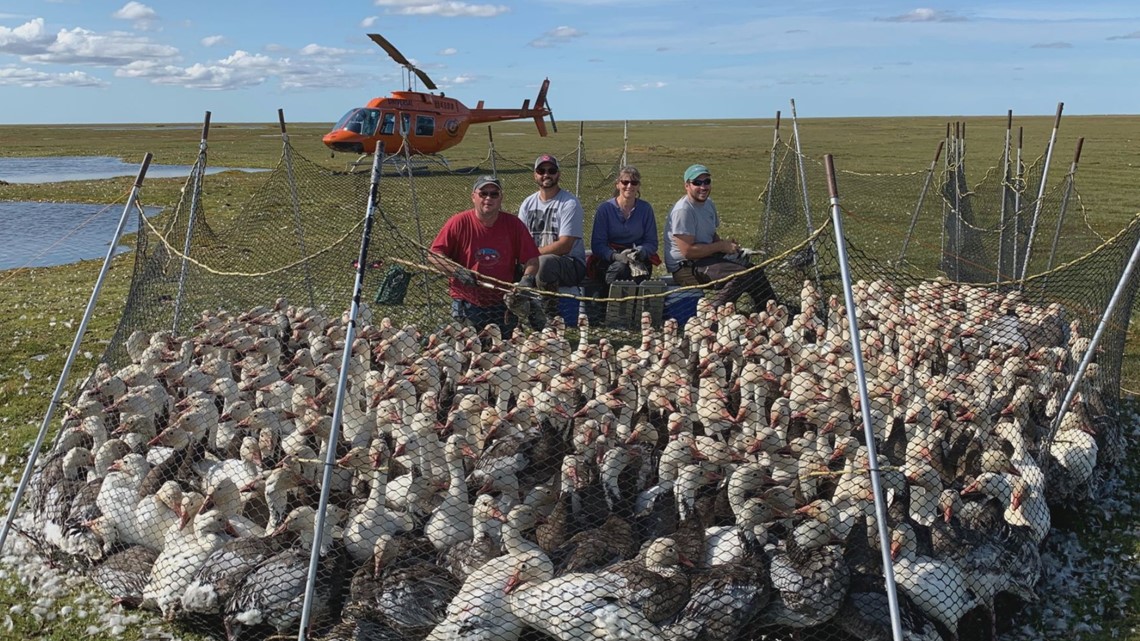NEW YORK — The practice of banding birds has been around for centuries, dating back to 218 BC. The modern form of banding began in North America about 1805 with John James Audubon. Banding is a way to gather information on the lives of birds, and is both a complex and delicate procedure.
So imagine banding birds in the rugged environment of the Arctic. That's exactly how DEC Wildlife Biologist and Grand Island native Josh Stiller spent part of his summer. He joined biologists from three other groups on Baffin Island in the Canadian Arctic. They were there to band several thousand geese, including Brant, a native New York goose similar to, but smaller than the Canada goose.
"Their numbers are smaller so they're more sensitive to harvest, we just in general have to be more careful how we manage them, and have to have more information," Stiller said. "And they're the ones that are most frequently found in New York. Like I said, we winter about 45 percent of the Brant population winters in New York."


The five year project is in its second year. Stiller says they expect to learn quite a bit.
"About their migration routes, habitat usage, annual survival, harvest rates, and fidelity, so how often are they going to be going back to the same areas, whether that's the breeding areas or the wintering areas," Stiller said.
Though not a threatened species, the Brant's choice of breeding habitat does make life a little more difficult for them. They migrate in the spring from New York and the East Coast, heading north to their preferred breeding grounds in very remote places like Baffin Island. That gives them a pretty short window of opportunity to reproduce.
"They have a really short breeding season before it freezes back up." Stiller said. "So these birds are stressed a lot more than our Canada geese that have this huge range of time that they can nest,these birds are on a very short time schedule. They have a lot fewer young,they don't always reproduce in every year, they have what's called a boom and bust type of productivity. "
Aside from all of the information being gathered, the project could also be looked at as a lesson in connectivity, a reminder of why habitat protection is so important, and why we all must remain mindful of our impact on the planet.
"It's a species that relies on habitat in New York to survive" Stiller said. "If we don't have the necessary information to properly manage the species, they're a sensitive species, that if there's massive changes,you brought up climate change and things like that, we really don't know what the effect is going to be on this species."
For more information on the project, click here
RELATED: 2 The Outdoors: Leave No Trace

